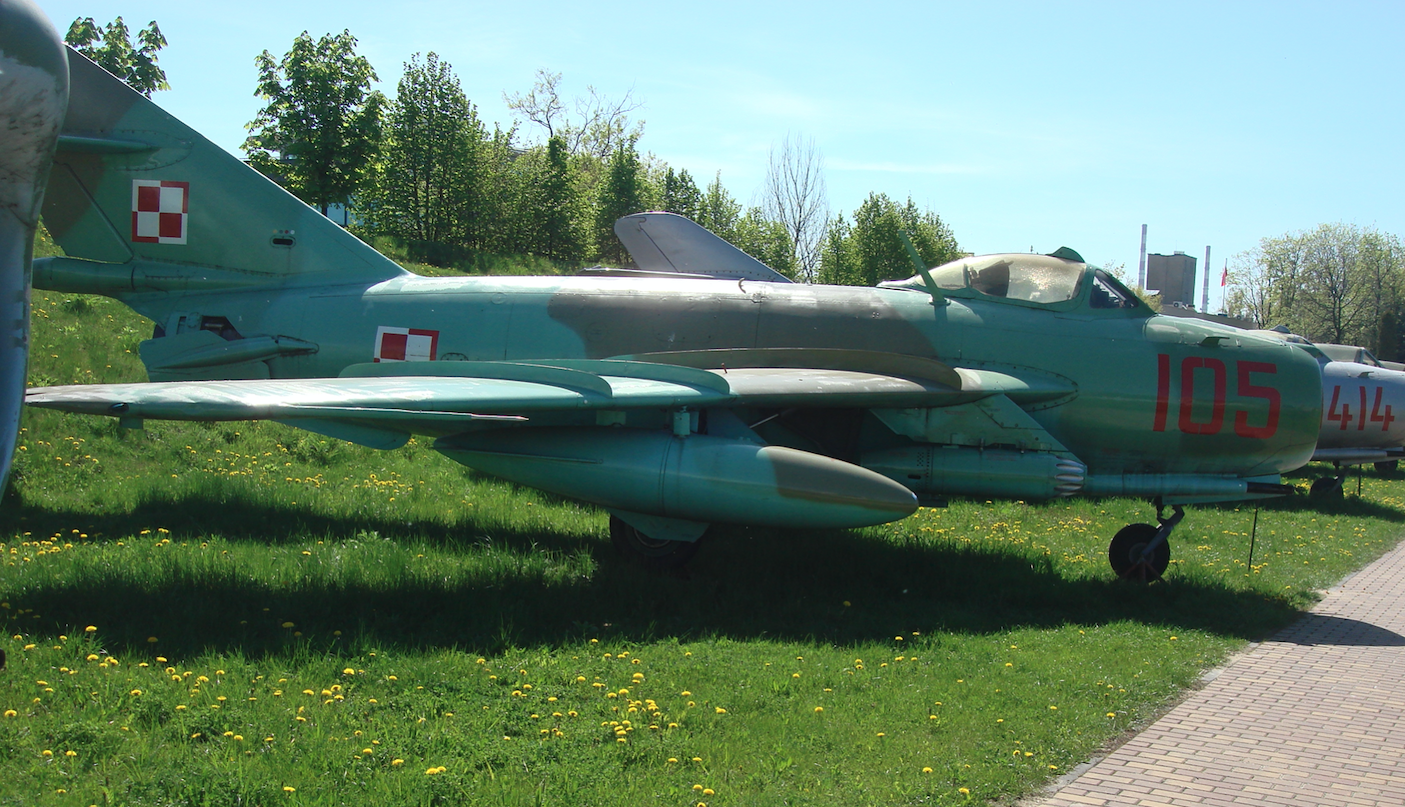Kraków 1.05.2007
167b Section 1959.07.02.
WSK Mielec ( LZR ) Lim-5 M, Lim-6 bis, Lim-6 M.
Poland
Fighter-attack and reconnaissance aircraft, strategic support.
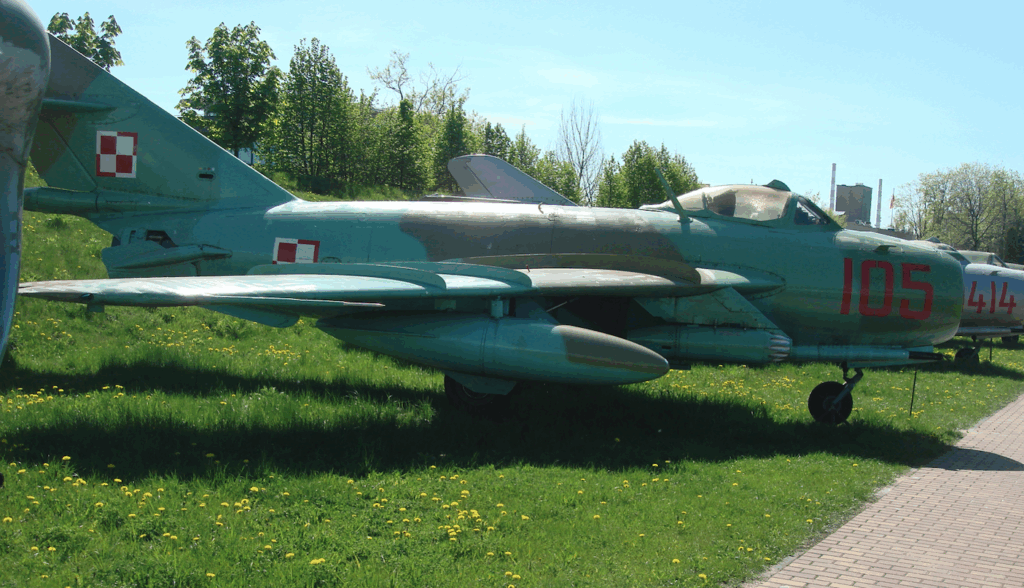
Construction of Lim-5 M.
Currently (2007) there is no longer a single copy of Lim-5 M. All copies of the Lim-5 M series were rebuilt into Lim-6 bis aircraft. A characteristic feature of these cars were fairing-tanks mounted on the wings directly next to the fuselage. These tanks not only housed additional fuel, but also protected the user’s doubled landing gear wheels. In theoretical theory, very beneficial; additional range and the possibility of landing on incidental landings. But the reality is more gray. The range was additional, but as fuel was depleted, it moved to the center of gravity, which appeared and was the pilot of the machines. The doubled landing gear makes landing easier. A burst tire does not affect the landing. But additional wheels additional fuel, and through to the range. On the other hand, from the use of the 60s of the 20th century, there were over 100 military airports in Poland, so there was no power to search for occasional landing sites. In the solution; fairing tanks and double landing gear were abandoned.
Lim-5 M compared to the Lim-5 fighter: On the wings placed in fairing tanks made of composite, with a capacity of 2 x 560 liters. Double wheels of the passenger landing gear were used, which facilitate operation at ground airports. Wheels shared on a common axle. The additional wheel was covered in hidden positions by a fairing tank. In the place where the under-fuselage comb is mounted a PT-19 braking ribbon parachute, (other sources give the symbol SH-19). On the sides of the electrical part of the fuselage could be mounted rocket launch accelerators, 2 x 9.81 kN. Were the devices guided tubular launchers of unguided rocket missiles Mars; 2 x 8 copies, 2 x 16 copies, 2 x 24 copies or garlands of 2 x 3 unguided rocket missiles caliber 132 mm.
Lim-6 bis design.
Single-seat, single-engine mid-wing, semi-monocoque, all-metal design.
Swept wing, called sickle, with a sweep angle of 45 degrees at the fuselage and 42 degrees further. Laminar profile S-12s at the root and SR-11 at the tip were used. Wing area is 22.6 m2, wedge angle 1 degree, lift -3 degrees, relative thickness 8%, aspect ratio 4.08, convergence 1.23. Wing length is 962.8 cm. Single-spar design, with rear auxiliary spar. At the end of each wing, loading masses of 5.1 kg. Flaps with a total area of 2.86 m2 deflected for take-off by 20 degrees, and for landing by 60 degrees. The ailerons, with a total area of 1.6 m2, are deflected up and down by 18 degrees. A trimmer operated by an electric motor is mounted on the left aileron. Three pairs of aerodynamic guide vanes are placed on the upper surface of the airfoils. The wing is mounted to the fuselage using four nodes. On the left wing, on the lower surface, there is a deflectable landing light ŁSFW-45. On the right wing, on the upper surface, there is a gyromagnetic compass transmitter PDK-45. The wings are equipped with 4 nodes for suspending weapons or additional fuel tanks. The inner ones are particularly characteristic, which are built on high pylons and additionally supported by struts connecting the pylon to the fuselage.
The fuselage of the aircraft begins with a central air intake with a partition, which divides the air duct into two bypassing the hermetic pilot’s cabin on the sides. In the front of the fuselage there was a bay for a single landing gear. Under the cockpit there was a compartment for the weapons carriages and equipment in the form of a receiving antenna for the RW-2 radio altimeter (measuring altitude in the range of 0 to 600 meters), an ARK-5 radio compass receiver and converters. Behind the cockpit there was the main so-called rubber fuel tank, with a capacity of 1,250 liters. Halfway along the fuselage, in the machine part, a camera AFA-39 was mounted. This camera allows for taking up to 200 vertical photos from an altitude of 500 to 5,000 meters. In this area of the fuselage there was also a transmitting antenna RW-2. The rear metal fuel tanks, with a cross-section of the letter “J”, cover the engine from below and have a capacity of 2 x 165 liters. In this area, there were also thermal indicators and engine equipment, the main element of which is the PCR-1-5 fuel pump. Under the fuselage, in a capsule covered with organic glass, there was a frame antenna of the ARK-5 radio compass, an antenna of the receiver of the flight over the MRP-48 radio guide station and an aerodynamic comb. On the sides of the fuselage, there were aerodynamic brakes, with a maximum deflection of 55 degrees.
The pilot was provided with a seat ejected by a cartridge. It allows leaving the Lim-6 bis aircraft at a minimum height in horizontal flight of 250 meters, in a spiral or corkscrew this height was already 500-600 meters.
Vertical stabilization with an angle of 56 degrees, area of 4.26 m2, including 0.947 m2 of the rudder. Deflection angle of 25 degrees. Horizontal stabiliser with an angle of 45 degrees, with an area of 3.10 m2, including 0.884 m2 of rudders. Trimmer placed on the left rudder. Rudders deflected 32 degrees up and 16 degrees down. At the base of the stabiliser, a container for a braking parachute type SH-19 was mounted, with a canopy area of 12 m2. This container is another (after the armament nodes) distinguishing feature of the attack version.
Front landing gear with KZ-29 wheels of dimensions 480 x 200, does not have a brake. It is self-adjusting in the range of 50 degrees. Main landing gear type KT-28 with wheels 660 x 160. Wheels equipped with brakes. Retraction and extension of the landing gear using a hydraulic system. Emergency extension using a pneumatic system. Landing gear base 3.368 m, wheelbase 3.849 m.
Lim-6 bis drive.
The Lim-6 bis built in Poland were powered by engines manufactured under license by the Polish industry, in WSK Rzeszów. This is the Lis-5 engine (licensed engine) with a thrust of 1 x 26.46 kN (1 x 2,700 kG), and with afterburning 1 x 33.12 kN (1 x 3,380 kG).
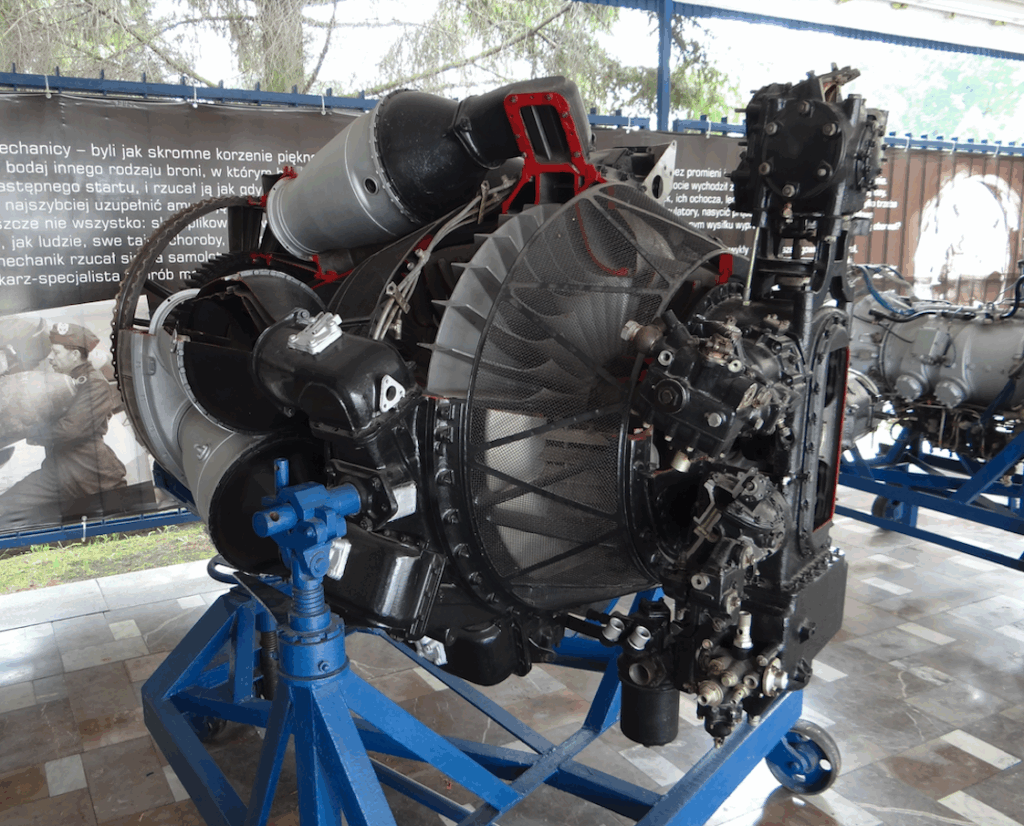
The afterburner is connected to the engine and is an extended and suitably formed exhaust pipe. A set of injectors is placed there, through which additional fuel is supplied, and its combustion causes an increase in thrust. The afterburner is finished with an adjustable nozzle. During the afterburner operation, the exhaust nozzle is completely open. When the afterburner is switched off, the movable segments close, reducing the cross-section of the exhaust port. The fuel is supplied to the engine by the PCR-1-5 pump. Other sources provide information that the fuel is supplied to the engine by the upper pump of the main fuel system PN-9 MA and the lower pump of the afterburner PN-14 A. The dry engine weight is 989 kg, the total length is 4.72 m, the service life is 200 hours.
Fuel is placed only in the fuselage, in the same way as in the Lim-1 / -2 fighter. The main soft fuel tank (rubber) is placed between the cabin and the engine and has a capacity of 1,250 liters. The second metal tank consists of two halves covering the engine in the rear part of the fuselage. It has a capacity of 2 x 165 liters.
The internal fuel supply can be increased by using tanks suspended under the wings with a capacity of 2 x 400 liters. These tanks are made of duralumin sheet or plastic. It is possible to drop them during flight.
Lim-6 bis equipment: The pilot had at his disposal the following instruments: WD-17 altimeter, KUS-1200 speedometer, AGI-1 artificial horizon, WAR-75 variometer, ARK-5 radio compass indicator, engine operation control devices and various installations.
A semi-automatic, gyroscopic ASP-4 NM sight (its head is located in the cockpit above the instrument panel) with SRD-1 M radio rangefinder was used for aiming. The effective range of fire with this system was up to 2,000 m. If the aircraft did not have a radio rangefinder, the sight cooperated with an optical rangefinder, but the range with this combination dropped to 800 meters.
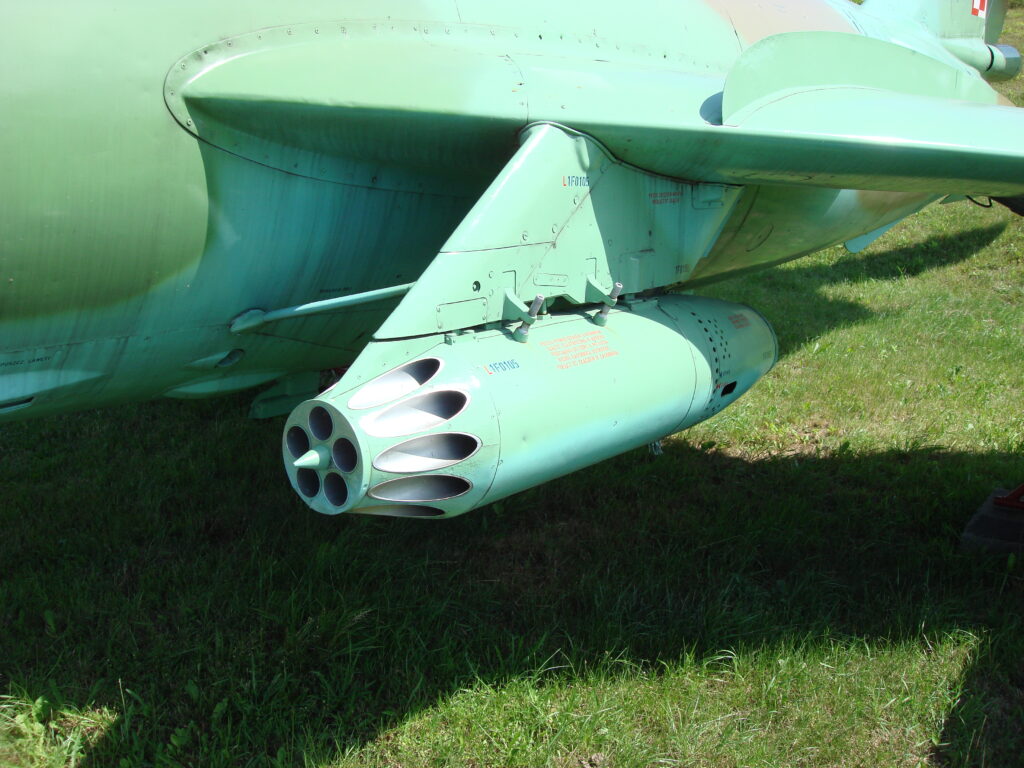
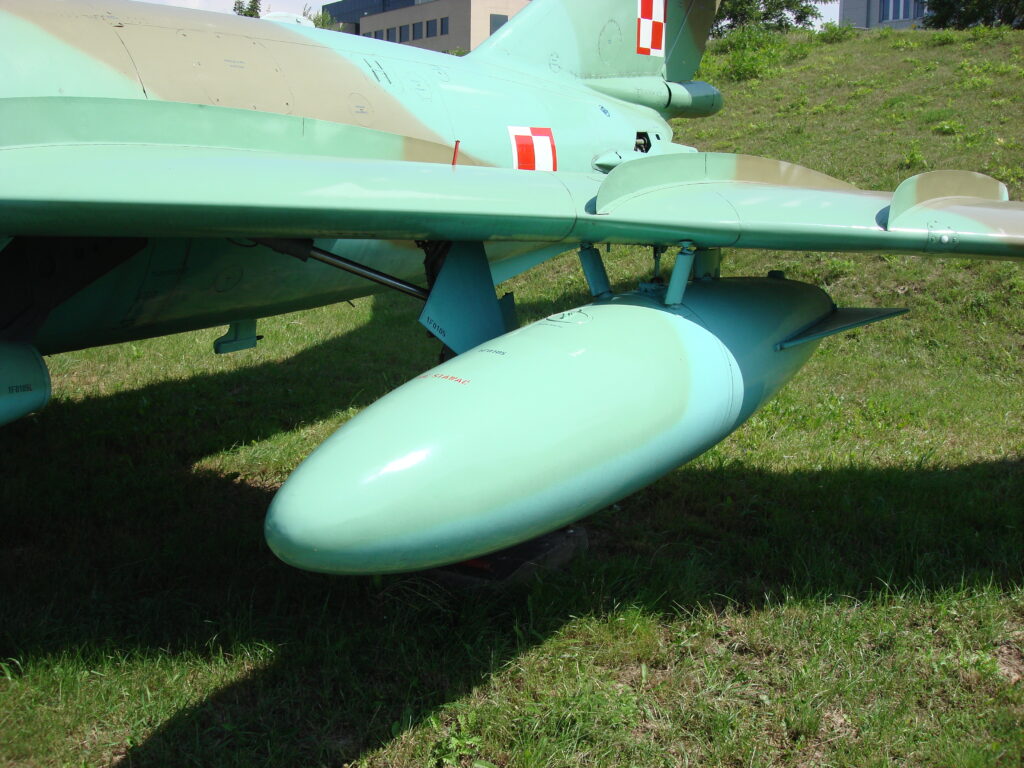
The Lim-6 bis aircraft’s gunnery is placed on a trailer lowered for servicing. It usually consists of one N-37 D cannon (or similar) with a supply of 40 rounds and two NR-23 cannons (or similar) with a supply of 80 rounds for each cannon. There are also aircraft with fewer cannons; e.g. 1 caliber 37 mm and 1 caliber 23 mm. It is supplemented by a S-13 type photo gun.
The aircraft’s permanent equipment also includes an EKSR-46 electric rocket launcher built into the vertical stabilizer, close to its base. It has four signal rockets in different colors.
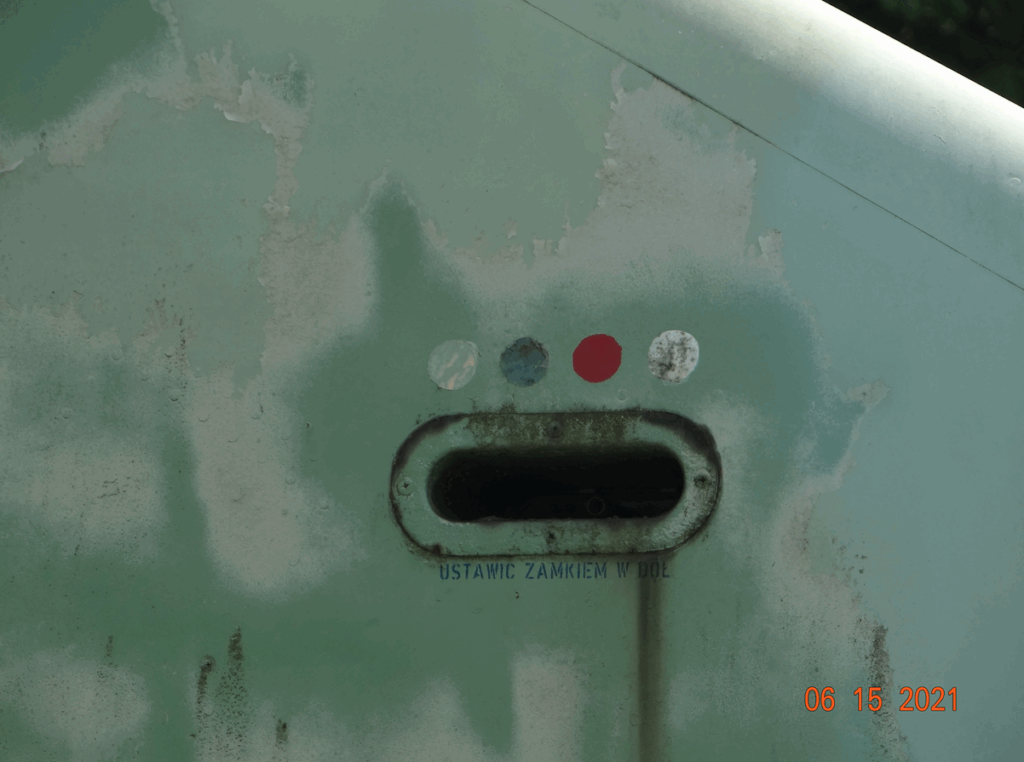
The external armament is suspended on 4 underwing nodes. On the internal nodes, Mars-2 launchers with 16 n.p.r. caliber 57 mm (S-5, S-5M, S-5K) and bombs (OFAB-100, SAM-100 MN, AO-50-100, ZAB-100-114, P-50, FOTAB-100-50) can be used. On the external suspension nodes, additional bombs weighing up to 250 kg (FAB-250 TS, RBK-250, ZAB-250-200, AGITAB-250-85), tanks with incendiary mixture ZB-360, additional fuel tanks PTB-400 or BG-2.
The Lim-6 bis armament is classified in the following variants; 1S-0-0.0 – without suspension. 1S-001.0 – with 2×100 kg bombs on internal suspension nodes. 1S-2-5-5.1 – with 2 250 kg bombs on external and 2 100 kg bombs on internal suspension nodes. 1S-2-5.2 – with 2 250 kg bombs on external and with Mars-2 launchers on internal suspension nodes. 1S-2-4.1 – with two 400 liters fuel tanks on external and 2 100 kg bombs on internal suspension nodes. 1S-2-4.2 – with 2 400 liters fuel tanks on external and Mars-2 launchers on internal suspension nodes. 1S-0-4.2 – with 2 additional fuel tanks of 400 liters on external suspension nodes. 1S-2-2.2 – with 4 Mars-2 launchers suspended.
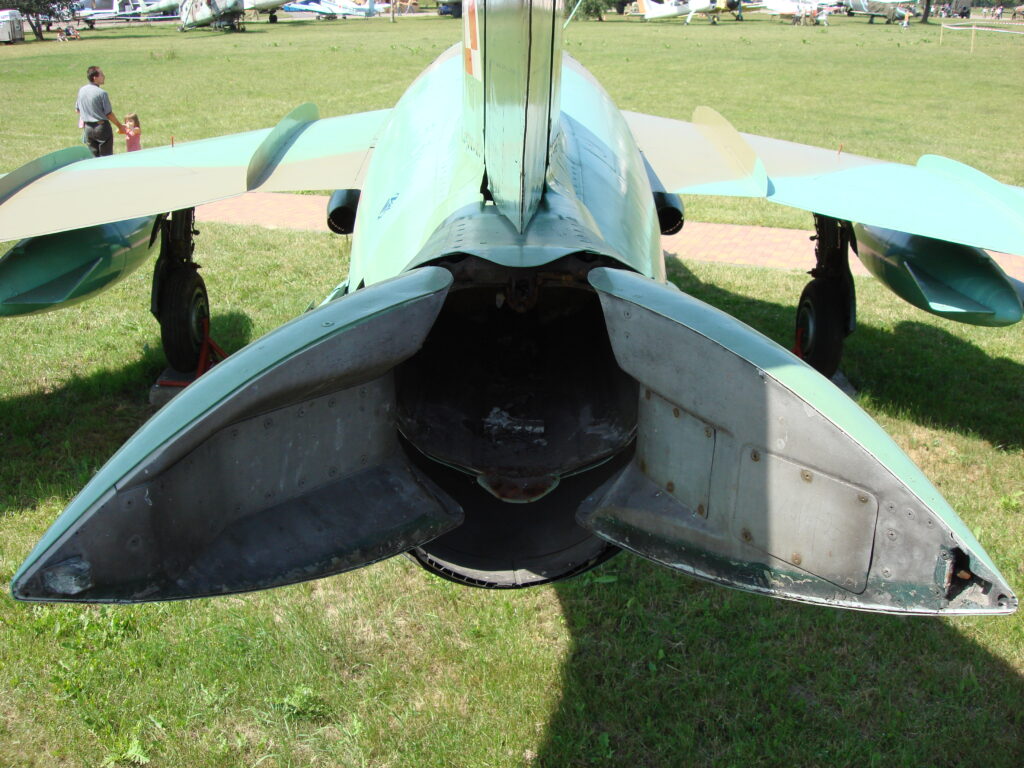
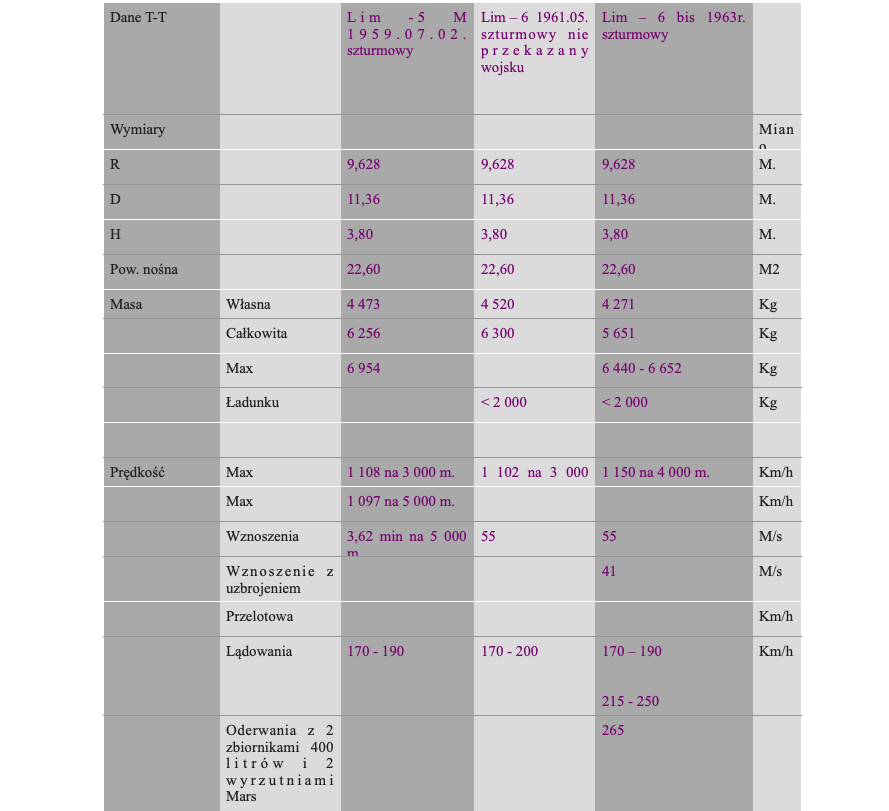

Written by Karol Placha Hetman

